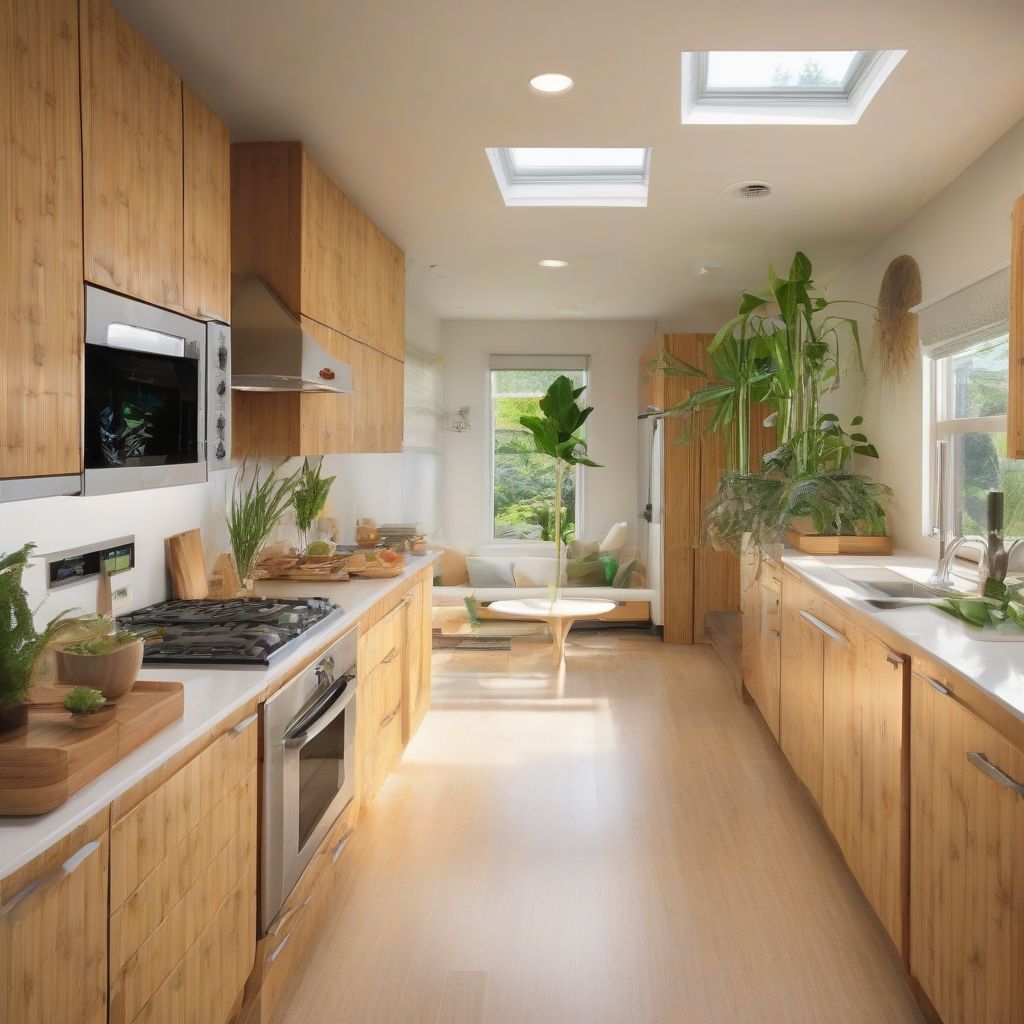Imagine this: you’re finally renovating your kitchen, picking out the perfect countertops and cabinets you’ve always dreamed of. But this time, you’re not just focused on aesthetics; you’re also thinking about the environmental impact of your choices. You’re picturing a beautiful and healthy home, built with sustainable materials that are good for you and the planet. This dream is entirely achievable with eco-friendly renovations!
Choosing eco-friendly materials for your home renovation is about more than just jumping on the latest trend—it’s a conscious decision with a ripple effect of benefits, impacting your health, well-being, and the environment. Let’s dive into why making the switch to sustainable materials is a win-win for your home and the planet.
Healthier Homes, Happier Families
Did you know that conventional building materials can release harmful toxins into your living space? These volatile organic compounds (VOCs) can contribute to respiratory issues, allergies, and other health problems. By choosing eco-friendly materials, you’re effectively creating a healthier haven for your family.
Here are some ways eco-friendly materials contribute to a healthier indoor environment:
- Improved Indoor Air Quality: Materials like bamboo, reclaimed wood, and low-VOC paints release significantly fewer pollutants, allowing you to breathe easier and enjoy cleaner air inside your home.
- Reduced Exposure to Allergens: Natural and sustainable options are often hypoallergenic, minimizing dust mites, mold, and other allergens that can trigger sensitivities.
- Safer for Children and Pets: Eco-friendly materials prioritize natural and non-toxic components, making your home a safer space for your little ones and furry friends to play and thrive.
 Eco-Friendly Kitchen
Eco-Friendly Kitchen
Saving Money and the Planet: A Powerful Duo
Contrary to popular belief, eco-friendly renovations don’t have to break the bank. In fact, choosing sustainable options can lead to significant long-term savings while minimizing your environmental footprint.
Here’s how you can save money and be kinder to the planet:
1. Energy Efficiency = Lower Utility Bills
Many eco-friendly materials boast impressive insulation properties, helping you regulate your home’s temperature more efficiently. This translates to reduced reliance on heating and cooling systems, ultimately lowering your energy consumption and saving you money on utility bills month after month.
- Think: Insulation made from recycled denim or cellulose, energy-efficient windows, and cool roof systems that reflect sunlight.
2. Durability That Stands the Test of Time
Eco-friendly materials are often crafted from durable, long-lasting resources, translating to less frequent replacements and repairs. This longevity saves you money in the long run and reduces waste, minimizing your environmental impact.
- Think: Flooring made from reclaimed wood or bamboo, countertops crafted from recycled glass, and durable, low-maintenance siding options like fiber cement.
3. Water Conservation for a Sustainable Future
Water conservation is crucial for the environment. Eco-friendly fixtures and appliances prioritize water efficiency without sacrificing performance.
- Think: Low-flow toilets, faucets, and showerheads, rainwater harvesting systems for irrigating your garden, and drought-tolerant landscaping.
Boosting Your Home’s Value and Appeal
An increasing number of homebuyers are prioritizing sustainability and eco-friendly features. By incorporating these elements into your renovation, you’re not only creating a healthier living space but also boosting your home’s market value and appeal.
Here’s how eco-friendly features can increase your home’s appeal:
- Modern and Desirable Aesthetic: Eco-friendly design often incorporates natural elements and clean lines, creating a modern and inviting atmosphere that appeals to potential buyers.
- Health-Conscious Buyers: Families with young children or individuals with allergies are more likely to be drawn to homes that prioritize indoor air quality and non-toxic materials.
- Environmentally Aware Market: As sustainability becomes increasingly important, homes with eco-friendly features are becoming more desirable and valuable in the real estate market.
Top Eco-Friendly Materials for Your Renovation
Now that you understand the compelling benefits, let’s explore some popular and versatile eco-friendly materials you can incorporate into your next renovation project:
1. Bamboo: A Renewable Wonder
Bamboo is a highly renewable resource that grows incredibly fast, making it an environmentally friendly alternative to traditional hardwood. It’s known for its strength, durability, and versatility, making it suitable for flooring, cabinetry, and even countertops.
2. Reclaimed Wood: Beauty with a History
Reclaimed wood adds warmth, character, and a touch of history to your home. By repurposing wood from old barns, factories, or other structures, you’re giving it a new life while reducing the demand for newly harvested timber.
3. Cork: Sustainable and Stylish
Cork is harvested from the bark of cork oak trees without harming the tree itself, making it a highly sustainable option. Its natural insulation properties, durability, and unique texture make it an excellent choice for flooring, wall coverings, and even furniture.
4. Recycled Glass: From Trash to Treasure
Transforming discarded glass into stunning countertops, backsplashes, and tiles is a fantastic way to reduce waste and add a touch of modern elegance to your home. Recycled glass surfaces are durable, low-maintenance, and come in a range of colors and patterns.
5. Low-VOC Paints and Finishes: Breathe Easy
Traditional paints often contain high levels of VOCs. Opting for low-VOC or natural paints is a simple yet impactful way to improve your indoor air quality and create a healthier living environment for your family.
[amazon bestseller=”eco-friendly building materials”]
Conclusion: Embracing a Sustainable Future
Choosing eco-friendly materials for your home renovation is a powerful way to create a healthier, more sustainable living space for you and your family. From reducing your environmental impact to improving indoor air quality and saving money on energy bills, the benefits are truly compelling. As you embark on your next renovation journey, consider incorporating these eco-friendly options and making choices that benefit both your home and the planet.
What steps are you most excited to take towards an eco-friendly renovation? Share your thoughts in the comments below!
